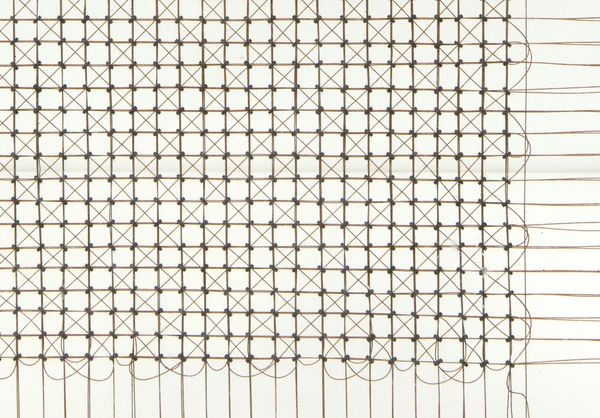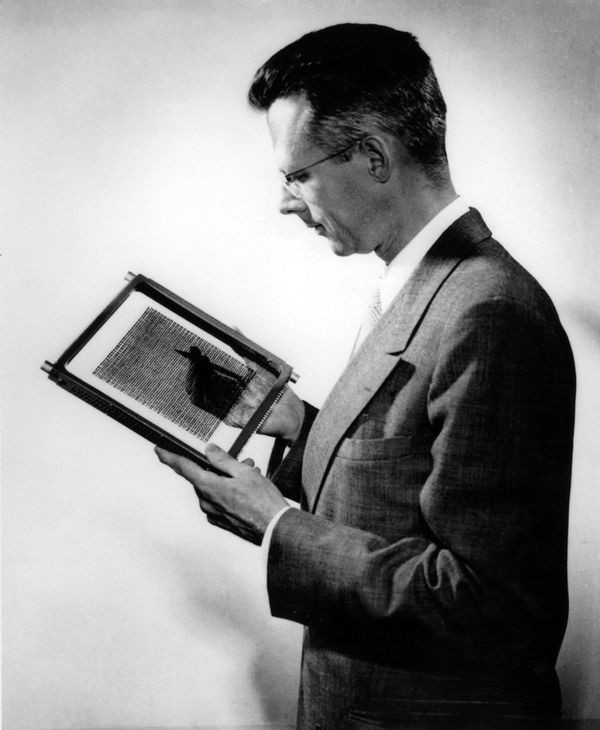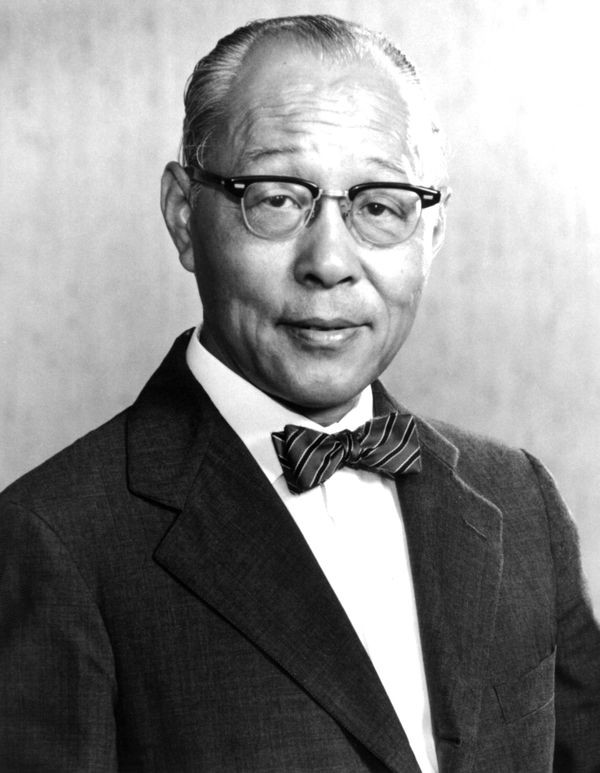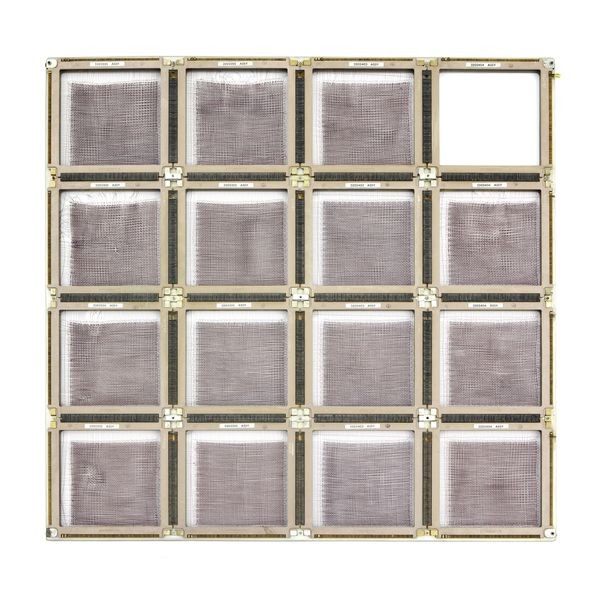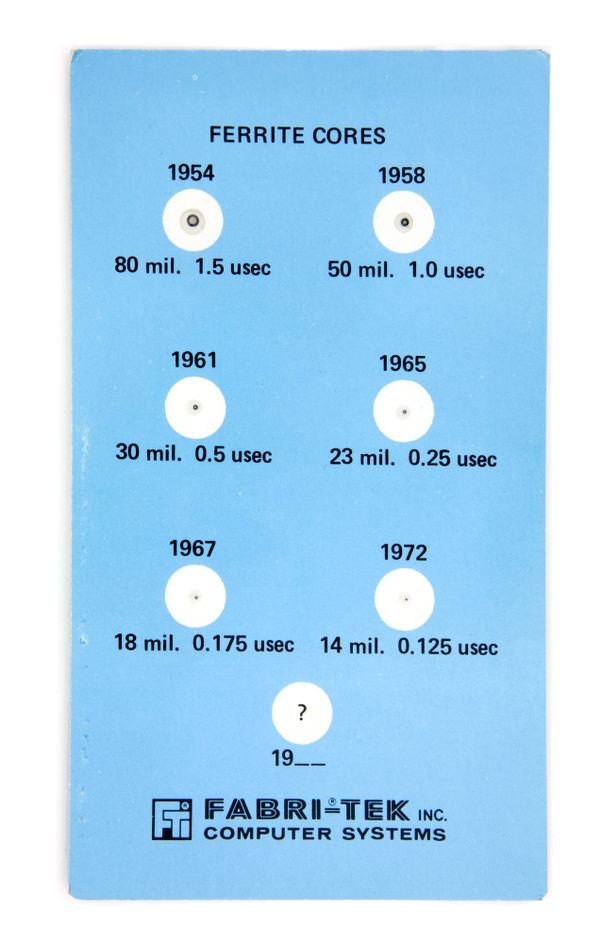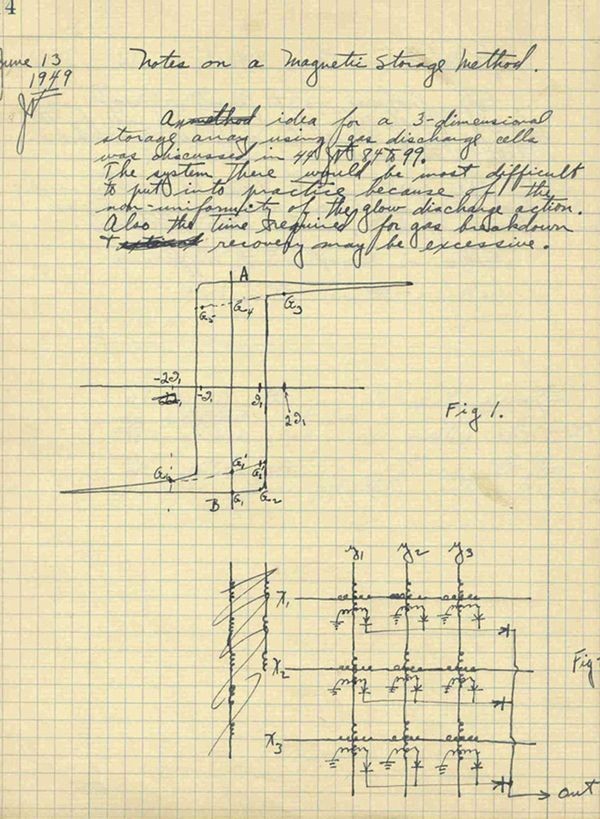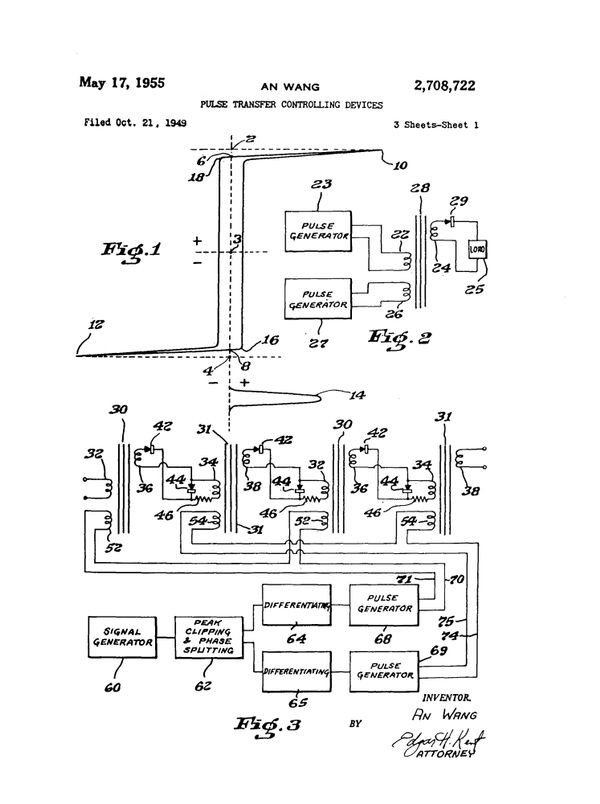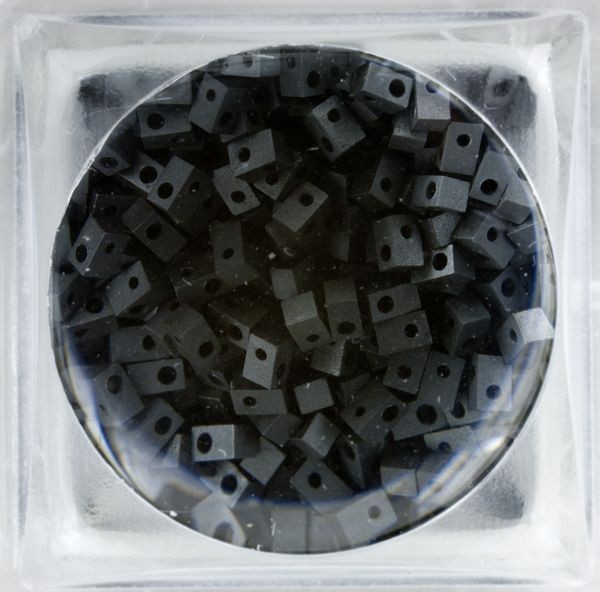Magnetic Core Memory
Whirlwind core plane
Whirlwind was originally designed to use cathode ray tube (CRT) memory. Its slow speed and unreliability led inventor Jay Forrester to use core instead.
Magnetic Core Memory
Tiny donuts made of magnetic material strung on wires into an array: the idea revolutionized computer memory. Each donut was a bit, magnetized one way for “zero,” and the other way for “one.” The wires could both detect and change the magnetization. In 1953, MIT’s Whirlwind became the first computer to use this technology.
Core memory swiftly swept away competing technologies. But manufacturing it was a delicate job, entrusted mostly to women using microscopes and steady hands to thread thin wires through holes about the diameter of a pencil lead.
Jay Forrester holding core memory plane
Jay Forrester, an MIT researcher and manager, devised the crucial “coincident current” method of controlling how information is read and written in core memory.
View Artifact DetailCore memory board
Early cores were 1/16” in diameter, could be accessed in 5 microseconds, and cost about $1 per bit. Eventually they were 4 times smaller, 10 times faster, and 100 times cheaper.
View Artifact DetailAn Wang
In 1955, Wang sold the rights for his core memory patent to IBM for $500,000, which he used to found the highly successful Wang Laboratories.
View Artifact DetailWhirlwind magnetic core memory plane
Whirlwind, the groundbreaking MIT computer, pioneered the use of magnetic core memory. Though several inventors were involved, it was MIT’s Jay Forrester who perfected the technology.
View Artifact DetailMagnetic core sample brochure
Fabritek was one of the largest makers of magnetic core memory. As cores got smaller, the joke was that new cores were made from the holes punched out of the previous generation of cores.
View Artifact DetailWho Invented Core Memory?
Success has a thousand fathers. Or in this case, at least, five.
Amateur inventor (and street inspector for Los Angeles) Frederick Viehe filed a core memory patent in 1947. Harvard physicist An Wang filed one in 1949. RCA’s Jan Rajchman and MIT’s Jay Forrester filed in 1950 and 1951 respectively.
Core memory proved extraordinarily successful. Success brought extraordinary profits…which in turn ignited ownership disputes. Whose invention was it?
In 1964, after years of legal wrangling, IBM paid MIT $13 million for rights to Forrester’s patent—the largest patent settlement to that date.
Jay Forrester notebook page
This notebook entry from June 13, 1949 shows Forrester’s early thoughts on the “coincident current” technique for magnetic core memory.
View Artifact DetailIt took about seven years to convince people in the industry that magnetic core memory would work, and it took the next seven years to convince them that they had not all thought of it first.
Frederick Viehe patent
Viehe was a Los Angeles County sidewalk inspector who experimented with magnetic materials in his spare time. IBM bought the rights to his patent.
View Artifact DetailWang core memory patent
Wang co-invented the pulse transfer controlling device with Way-Dong Woo, a schoolmate from China. Wang’s patent was one of the most important for core memory and IBM paid him $500,000 in 1955 for rights to it.
View Artifact DetailBIAX memory cores (10 megacycle)
BIAX “cores," which were actually cubes, could be read non-destructively at speeds up to 10 Mhz. But they were expensive and used in only in a few high-speed military and aerospace computers.
View Artifact Detail